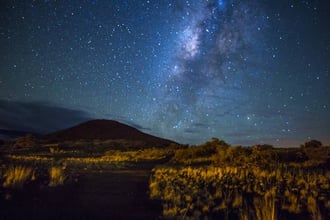AAPI Heritage Month is a time to celebrate the contributions and influence of Asian Americans and Pacific Islanders in the United States. This month, we turn our attention to the Mauna Kea Observatories, a collaborative body of independent astronomical sites that also hold deep cultural significance for Native Hawaiians and the broader Asian-Pacific community. By exploring the intersection of culture, science, and technology, we honor both the heritage and the advancements that define this region.
Mauna Kea Observatory: An Overview
Perched atop the summit of Mauna Kea, the highest point in Hawaii, the Mauna Kea Observatories are one of the most important astronomical sites in the world. The high altitude, dry environment, and stable air make it an ideal location for observing the cosmos. The observatory is home to some of the most advanced telescopes and instruments, contributing significantly to our understanding of the universe.
Cultural Significance of Mauna Kea
Mauna Kea is not just a scientific treasure but also a sacred place for Native Hawaiians. It is considered the dwelling place of the gods and a connection between the heavens and the earth. The mountain is rich in cultural history, with numerous stories and traditions that highlight its importance to the Hawaiian people. Respecting and preserving this cultural heritage is crucial as we advance scientific exploration.
Contributions of AAPI Scientists and Engineers
The observatories' success is also a testament to the contributions of many AAPI scientists and engineers. Figures like Jane Luu, a Vietnamese-American astrophysicist famous for her role in discovering the Kuiper Belt beyond Neptune, have made groundbreaking contributions to our understanding of the universe. Highlighting these individuals' achievements not only celebrates their work but also inspires future generations of AAPI scientists and engineers.
The Role of Optics and Optical Engineering
Optics and optical engineering are at the heart of the observatory’s capabilities. Advanced optical systems enable telescopes to capture clear, detailed images of distant celestial objects. Innovations in optical coatings and mirror design, such as those provided by Andover Corporation, play a critical role in enhancing the performance of these instruments, ensuring we can peer deeper into space with greater clarity.
Astrophotography at Mauna Kea
Astrophotography allows us to visualize the beauty and vastness of the universe. The images captured at Mauna Kea are not only scientifically valuable but also artistically stunning. These photographs bridge the gap between science and art, showcasing the wonders of the night sky and the advanced technology that makes such imagery possible.
Andover Corporation’s Commitment to Excellence
At Andover Corporation, we pride ourselves on contributing to the field of astronomy through our exceptional coating expertise and vertically integrated processes. Our high-quality optical components support the cutting-edge research conducted at facilities like Mauna Kea. By providing superior delivered quality and short lead times, we ensure that observatories have the best tools available to explore the cosmos.
Celebrating AAPI Heritage Month through the lens of the Mauna Kea Observatory allows us to appreciate the rich cultural heritage and scientific achievements of the Asian-Pacific community. As we continue to explore the universe, let us also honor the traditions and contributions that make this exploration possible.